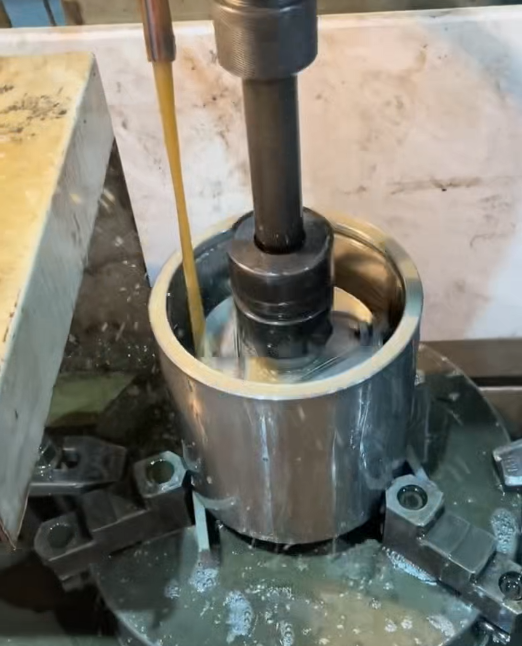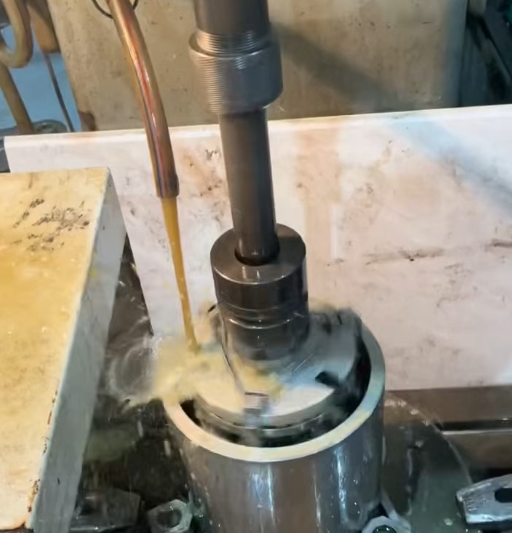Honing cutting process:
1. Constant pressure feed honing: In constant pressure feed, the feed mechanism presses against the hole wall with a constant pressure, which is divided into three stages.
The first stage is the shedding cutting stage. Initially, due to the roughness of the hole wall, the contact area between the oilstone and the hole wall is very small, resulting in high contact pressure, which quickly removes the protruding parts of the hole wall. However, due to the high contact pressure on the oilstone surface and the wear of the oilstone binder by the chips, the bond strength between the abrasive grains and the binder decreases. As a result, some abrasive grains fall off under the action of the cutting pressure, exposing new abrasive grains on the oilstone surface. This is self-sharpening of the oilstone.
The second stage is the crushing and cutting phase. As honing progresses, the hole surface becomes increasingly smooth, increasing the contact area with the oilstone. This reduces the contact pressure per unit area and reduces cutting efficiency. Simultaneously, the resulting chips are small and fine, and their abrasive effect on the binder is minimal. Consequently, the oilstone abrasive grains rarely fall off. During this phase, grinding is not performed by new abrasive grains, but by their tips. Consequently, the abrasive grain tips are heavily loaded, causing them to break and crumble, forming new cutting edges.
The third stage is the clogged cutting phase. As honing continues, the contact area between the oilstone and the hole surface increases. Fine chips accumulate between the oilstone and the hole wall, making it difficult to remove. This causes the oilstone to become clogged and slick. Consequently, the oilstone's cutting ability is extremely low, equivalent to polishing. If honing continues, the oilstone will become severely clogged, leading to adhesive blockage, completely losing its cutting ability and generating significant heat. This will affect both hole precision and surface roughness. Honing should be terminated as soon as possible at this point.
2. Quantitative Feed Honing: During quantitative feed honing, the feed mechanism expands and feeds at a constant rate, forcing the abrasive grains into the workpiece. Therefore, the honing process only experiences shedding and crushing, with no blocked cutting. This is because when the oilstone becomes blocked, the cutting force decreases, and the feed rate exceeds the actual grinding volume. This increases the honing pressure, causing the abrasive grains to fall off and break, enhancing the cutting action. To improve hole accuracy and surface roughness, this method can be followed by a period of no-feed honing.
3. Constant pressure-quantity feed honing: Initially, constant pressure feed honing is used. When the oilstone enters the blocking cutting stage, it is switched to quantitative feed honing to improve efficiency. Finally, no feed honing can be used to improve hole accuracy and surface roughness.


 English
English Español
Español Pусский
Pусский
 Lily
Lily